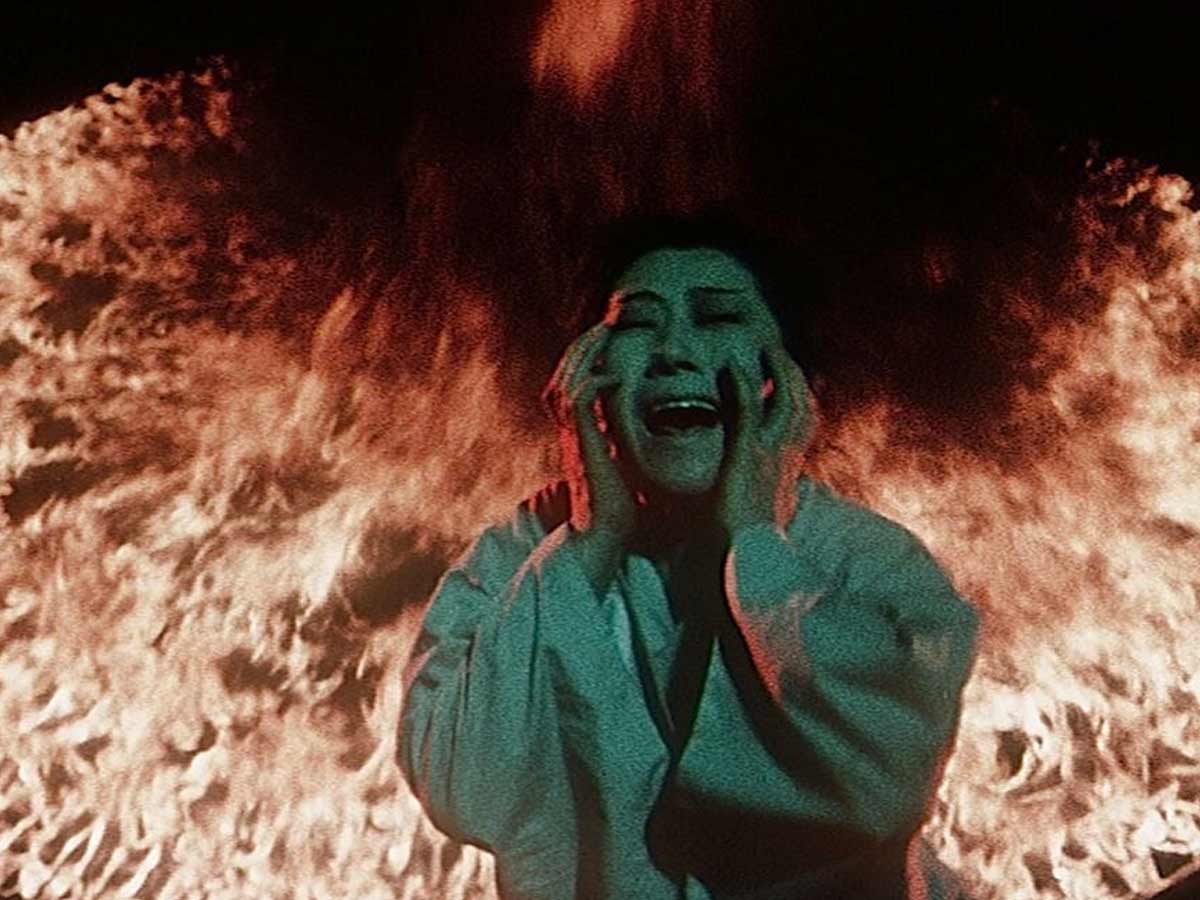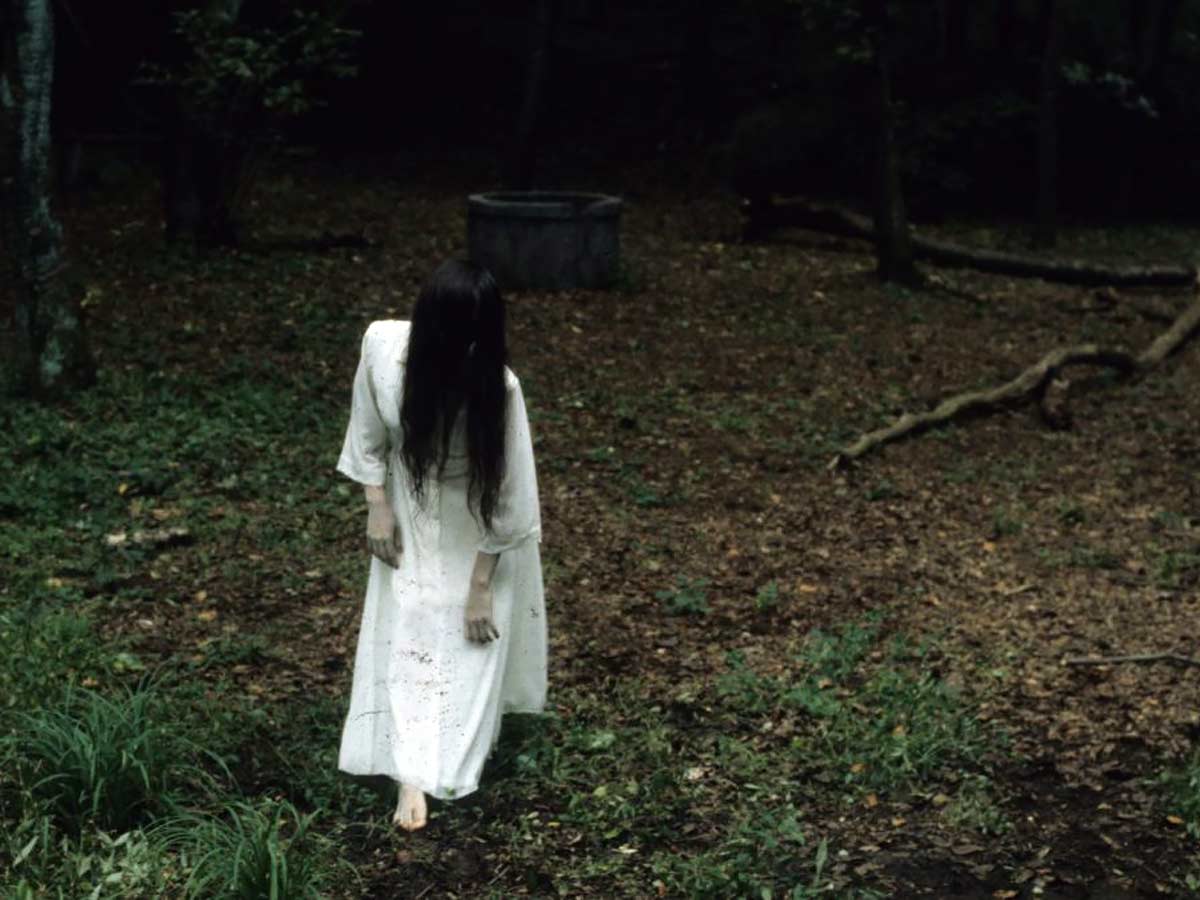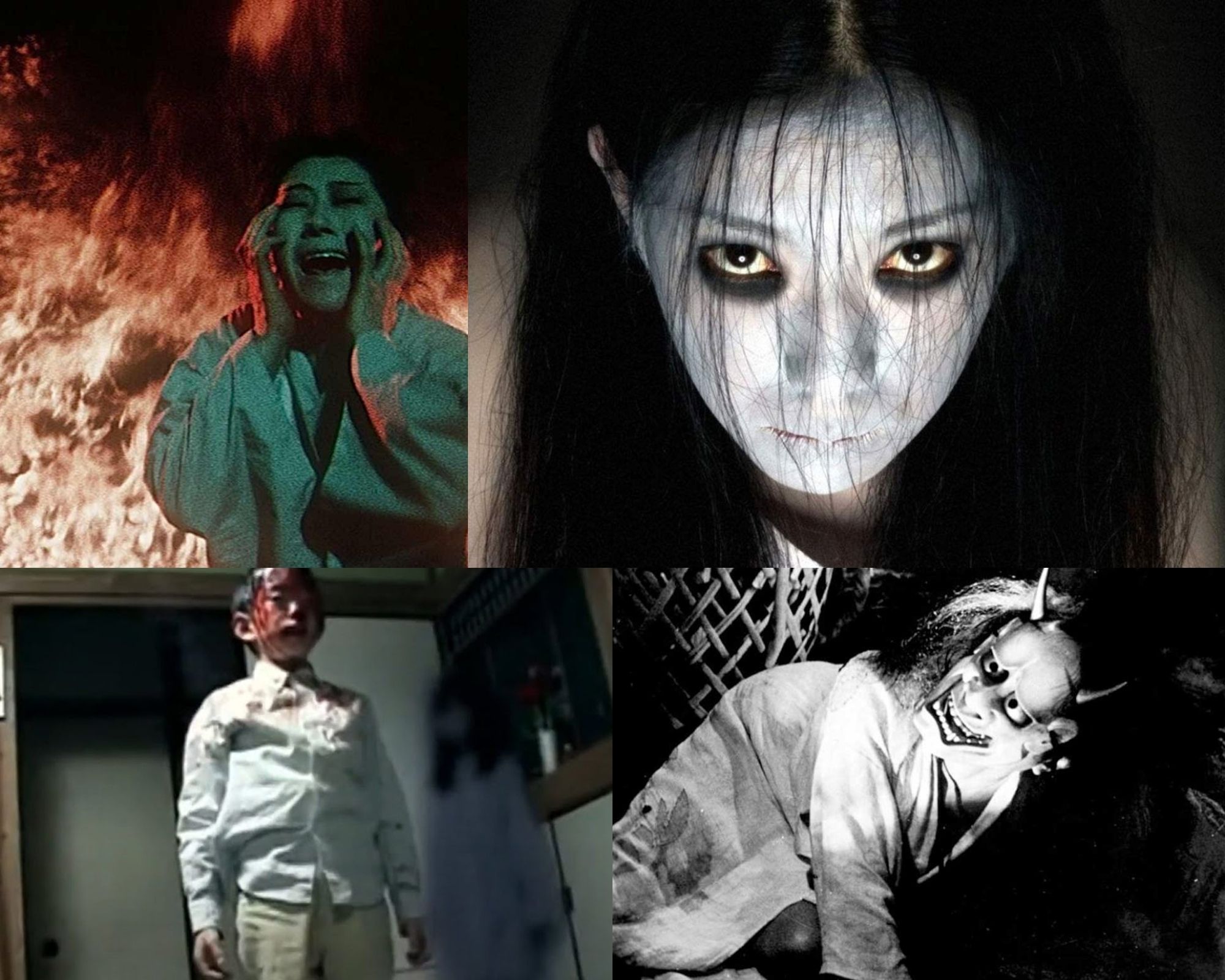There’s an explanation why some of the most famous American horror movies are rip-offs of Japanese originals: Ringu (later recreated as The Ring) and Ju-on: The Grudge (later recreated as The Grudge) are both horrifying films. To ensure that we all get some use out of our night lights, we’ve selected ten spine-chilling Japanese horror movies.
Japan has a rich storytelling heritage, with horror playing an important role. And it is this culture that feeds directly into the video. That means Japanese horror cinema is fantastic…if you know which films to see.
Shortpedia Voices has assembled a definitive list of the greatest Japanese horror movies of all time. If you’re looking for the latest and scariest Japanese horror movies around, look no further. It really doesn’t get any better than this. I watched these movies, and with a terrified heart, wrote these reviews.
These are the best Japanese horror movies to watch right now, and they redefine the term “scary.”
From the physically harrowing to the mentally disturbing, these are the best Japanese horror movies to watch right now.
Jigoku

Jigoku tells the story of Shiro, a theology student who suffers a series of misfortunes. Without giving too much away, there is a crime, sex, thievery, death, suicide, neglect, car crashes, and dishonesty all wrapped together in a warped cast of characters that Shiro must contend with.
Until one hour in, where someone dies, the plot continues like a straightforward crime thriller. And this is where the true horror starts.
For the rest of the movie, Shiro and his friends are trapped in Jigoku (Japanese Hell), fighting demons and torture. It’s also not a simple series. It’s 40 minutes of blood, burning, and yelling. Consider Dante’s Inferno reimagined in a Japanese setting.
And for those who are unfamiliar with the Buddhist concept of hell, this is an excellent primer.
Though the bright, effects-heavy torture scenes are the most unforgettable, the long, silent ones are the most moving. Shiro meets family members, relatives, and others he has wronged as he travels into the underworld. He is confronted with guilt and the secrets that his loved ones have been keeping. It’s poetically unsettling.
Jigoku is an odd beast. It can be tedious and perplexing at times, and you’re left to wait for the awaited Hell scenes. It’s essentially a crime story that doesn’t stop until the bad guys die.
However, take the time to watch this movie. You will discover deeper themes of conscience, remorse, destiny, and rebirth.
Also Read, 8 Best Places To Visit In Japan
Noroi: The Curse

I was skeptical of The Curse at first. Trailer clips of low-resolution VHS video showed a documentary-style horror movie – a concept I felt had been done to death. But The Curse proved me wrong; the movie’s clever combination of media styles provides a riveting plot, a uniquely Japanese twist on the genre, and a creepy contribution to the horror genre.
The Curse is off to a fast start. As paranormal investigator Masafumi Kobayashi arrives in a small town to investigate reports of unusual sounds. He discovers a strange network of psychic prodigies, “ectoplasmic worms,” long-forgotten ancient ceremonies, disappearances, and deaths.
“I want the facts, no matter how scary,” Kobayashi announces.
The Curse’s biggest asset is shown to be Kobayashi’s investigation. Instead of a tired story, we get a documentary of interviews, TV show video, and Kobayashi’s own hands-on research. This media combination, along with Japanese broadcasting stereotypes, creates a genuine “Japanese” feel. Add realistic characters and Japanese cultural points (such as cleansing rituals), and you have a classic Japanese horror experience.
The VHS video, which was originally unsettling, turned out to be one of the movie’s strongest points. The grainy, lo-fi graphics combined with the claustrophobic cinematography produce a creepy and intense visual style. In contrast to the normal clean, filtered visuals seen in a movie, The Curse’s footage seemed gritty and genuine. The Curse was one of the most intense and unsettling films I’ve ever seen, thanks to the use of a handheld camera, found footage and obstructed perspectives.
The Curse has a long-running time of just over two hours, but it never sounds boring. Kobayashi’s engrossing research, combined with the movie’s deft media blend, woven a creepy horror tale that held my attention from beginning to end.
Ju-On: The Grudge

Ringu is hot on his tail. Ju-On: The Grudge fueled the early 2000s J-Horror craze. Ju-On: The Grudge, released in 2002, was the third installment in the series. Ju-On: The Curse and Ju-On: The Curse 2 were both direct-to-video releases that spawned a third movie released in theaters.
Ju-On: The Grudge follows the ghosts of a woman and her son who were murdered by their husband/father. They torment and kill anybody who comes into touch with their home, having died with a grudge in their souls.
The Curse is infectious, which distinguishes this from the typical ghost house recipe. You are cursed if you reach the building. You are cursed if you come into touch with a cursed human. And once cursed, it’s only a matter of time before the spirits track you down and kill you. It’s a clever twist on the formula that eliminates the “escape from home” alternative.
The sound design and making-up, though, are what really make this one terrifying. The ghosts’ painted-white appearance is brilliantly clear. Nonetheless, it’s really creepy (I get chills every time I see the kid from this movie). And Kayako’s (the ghost wife’s) voice is spine-chilling.
However, the movie is not without faults. Since it is episodic, you don’t get to spend any time with any one individual. A chapter begins, you find a new survivor, and they’re gone before the next chapter begins. This is ideal for small slices of the scare. However, there is no sense of fear in the movie as a whole.
If you’ve seen many Japanese horror movies from this period, Ju-On might be too familiar to be genuinely shocking. However, if you’re new, give it a shot. It has a lot of exciting thrills for the uninitiated.
Ringu

Ringu is your patient zero if you want to trace the pattern of Western remakes (and general fascination with) Japanese horror movies. Based on a TV movie based on a Koji Suzuki book, Ringu was released in Japan in 1998. It was remade for American audiences as The Ring five years later, paving the way for further sequels.
Ringu begins with two rambunctious high school girls learning at home. One of the girls warns the other (and the audience) about a strange VHS tape that, when seen, dooms the spectator to death in one week. Unfortunately, the other girl had already seen the video a week before.
While Ringu presents itself as an urban legend, it is, at its heart, a typical Japanese ghost tale. Sadako is a vengeful Yurei who scares her victims to death. She has a Yurei-style backstory and looks (long, black hair and white clothing). (Her unsettling gait, on the other hand, was inspired by a Japanese dance style known as Butoh.)
Ringu’s heroine is Reiko Asakawa, a committed journalist, and single mother, in a gender reversal from the source material. She neglects her son more and more as she gets lost in the mystery of the cursed game. This creates an intriguing conflict between work and motherhood.
Ringu has a lot to say about gender, namely how women navigate and thrive – or do not – in patriarchal cultures.
Still, apart from Ringu’s cultural significance and persuasive social messages, it’s worth watching because it’s terrifying. I haven’t seen a movie through my fingers in a long time, so rewatching Ringu alone at night had me cringing on my sofa. At the very least, VHS tapes are no longer in use, so we’re completely exempt from Sadako… right?
Also Read, Beaches In Japan: The best they have to Offer!
Audition

Audition, the first Takeshi Miike movie to gain popularity in the West, offered viewers a glimpse of what the filmmaker would become (in)famous for – unapologetic, frequently distorted films highlighted by graphic brutality.
The tale of Audition normally begins enough; widower Shigeharu Aoyama is depressed and searching for new love. When Aoyama jokes about finding a simple way to poll women, his friend suggests throwing a fake movie audition to select the right candidate. Aoyama should choose the girl he liked most and then meet with her to inform her that the movie had been canceled due to a lack of financing. And then there’s romance. What could possibly go wrong?
A significant portion of the movie felt like a romantic thriller. The clever buildup left me rooting for our lead. About his deceit, Aoyama is never evil. Yet bad is on his tail. Though all seems normal at first, we soon discover that Aoyama’s love interest isn’t the perfect angel he is looking for.
Audition, a believable romance gone wrong, stands out from the cerebral, surreal Japanese horror movies (Ringu, Ju-On) that defined the period. The inspiration for the grueling, protracted climax, as well as the bloodcurdling sound effects, are disturbingly genuine.
Though I thought Miike’s gratuitous pursuit of the girl’s inspiration was excessive, Audition is a powerful movie thanks to its clever buildup and realism. Despite his extensive filmography, Audition remains my favorite Miike movie and one of the best horror movies Japan has to show. The movie is more topical than ever before due to the success of online dating sites like Tinder.
Onibaba

Horror is a thrilling genre. The only condition is that the movie is frightening. This is generally accomplished by the use of cheap thrills, superfluous storylines, and cheesy effects. Kaneto Shindo’s Onibaba creates a horror movie that taps into the heart of our humanity by ignoring these (usually fun) horror conventions.
Onibaba, set in the 14th century, revolves around an elderly woman and her daughter-in-law (the same pairing as Shindo’s previous movie Kuroneko). They make a pittance by murdering disgruntled soldiers and selling their armor, guns, and belongings. When their neighbor returns from the war, things get more complex.
He discovers that the old woman’s son, whose return she had been looking forward to, was killed in action.
The three form a friendship, and the neighbor becomes involved in their murderous plot. All is well before the neighbor and her daughter-in-law get close. The elderly woman becomes concerned about their blossoming friendship because it threatens her livelihood.
Doesn’t sound like anything out of a horror movie, does it? The most strong and unsettling horror movies, in my opinion, are those that might really happen. And Onibaba provides it, albeit hundreds of years ago.
The horrors of life in war-torn Japan lay the groundwork for Onibaba. Young men are drafted into the military, leaving their families to fend for themselves. Poverty and malnutrition force otherwise civil citizens to commit unspeakable crimes. Onibaba takes a genuine historical scenario and turns it into a pure nightmare. What lengths would humans go to survive?
Onibaba exemplifies the adage “easy is better.” The movie captivated me right away with its juxtaposition of haunting silence and kinetic, pulsing drums. The story is well-paced and neatly crafted, with no gaps.
It uses a clear mask, an impending tornado, stirring facial gestures, and bloodcurdling sound effects to create a frightening environment. My imagination proved to be much more powerful than any digital effects could ever be.
Onibaba is both exquisite and repulsive, raw and intense. Its simplicity and arresting style have turned it into a timeless masterpiece, and it is more than deserving of the label ” Best Japanese Horror Movie.”





























